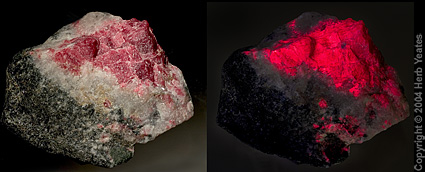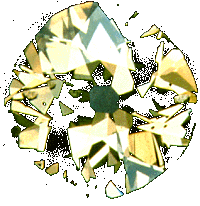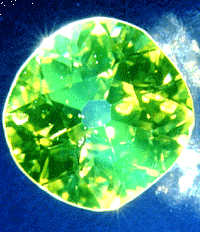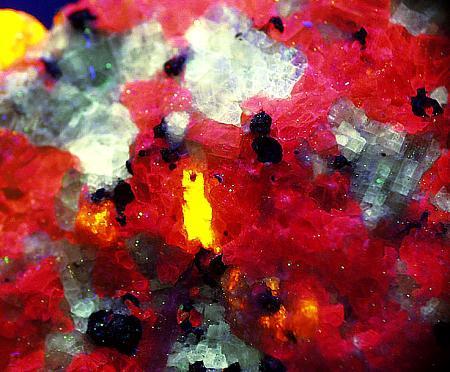

tugtupite, from Il╠maussaq, Greenland
Recall from this site's homepage that fluorescence is when an object absorbs light of a higher energy and emits light of a lower energy. When UV light rays are shone upon some minerals, they emit light in the visible spectrum. That's part of what's exciting, that invisible light produces visible light.
Some minerals fluoresce in shortwave UV light, others in midwave or longwave, and some produce different colored light in each range. A mineral's fluorescence or lack thereof can be helpful in identification and structure analysis.
About 10% of mineral "species" worldwide fluoresce, and most are dim and sort of variable. Some of these minerals include tugtupite (see above), fluorite, scheelite, calcite, scapolite, willemite, and autunite.
According to this site, even some diamonds fluoresce:


The most famous place in the world for fluorescent minerals occur is Franklin and Sterling Hills, New Jersey. More different mineral species are found there than anywhere else on earth, many unique to that area. This is a great site about the minerals found there, and it has great photos, like this one of barite & calcite:
